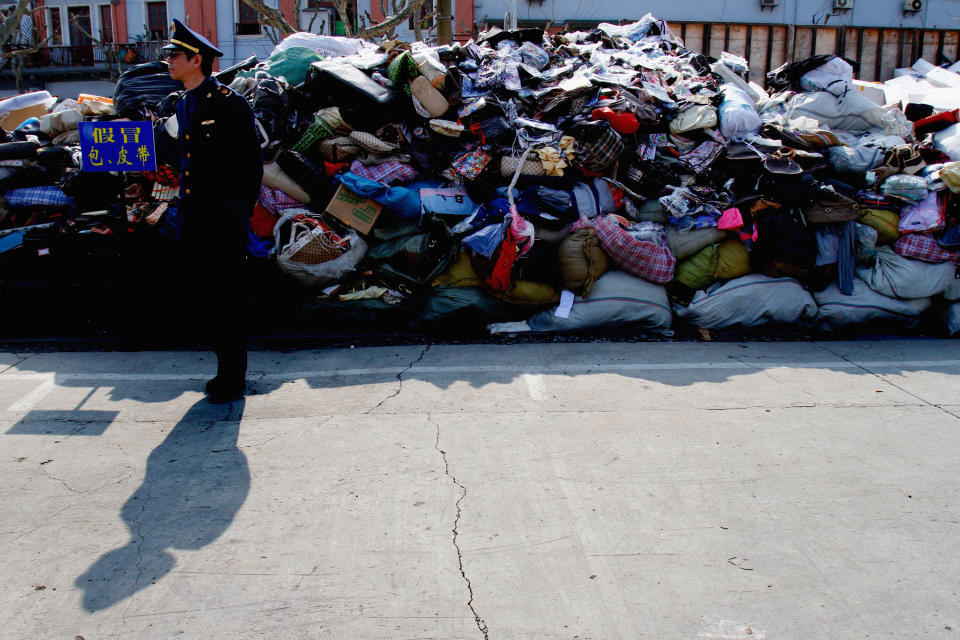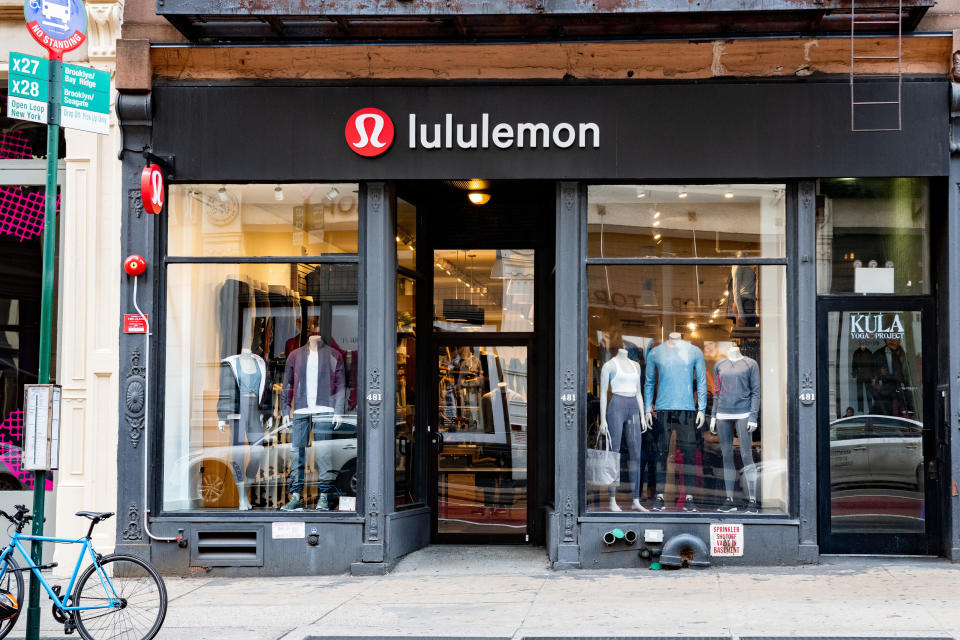How the RCMP is cracking down on the rise of counterfeit goods
The death of the retail industry may have been greatly exaggerated – but that doesn't mean the industry isn't currently going through major disruptive and fundamental changes. For this special series, Yahoo Finance Canada will look at how the retail scene is developing, what companies are doing to adapt, and what could come next. Click the image above to see our full coverage of what the future holds for the Canadian and global retail scene.
Each year, thousands of Canadians buy goods online – whether it’s a Canada Goose jacket, Ray Ban sunglasses or a Dewalt toolset – only to find out the product they just purchased is fake.
That’s when Barry Elliott steps in.
Elliott is a criminal analyst that works with the RCMP’s Canadian Anti-Fraud Centre (CAFC). He handles cases involving Canadian victims who have bought a fake good, as well as those involving people around the world who have purchased a counterfeit Canadian branded product, such as Canada Goose, Lululemon or Herschel.
The rise of online shopping has certainly kept Elliott busy. Over the last five years, the CAFC has helped 42,000 victims of counterfeit fraud recover nearly $15 million. In 2018 alone, more than 12,000 victims recovered about $4.2 million.
The proliferation of counterfeit goods sold online is an “epidemic”, according to a recent report from the Better Business Bureau in the United States.
The report, Fakes are not Fashionable, says the amount of counterfeit merchandise around the world has exploded in recent years. While it can be difficult to peg the exact scope of problem, as many purchasers don’t report the fake products, the Government Accountability Office said that the amount of counterfeit goods seized by U.S. customs agents in 2017 reached $1.2 billion. The OECD says that counterfeiting in the U.S. went up 80 per cent between 2008 and 2013.
The BBB report credits Elliott’s Canadian Anti-Fraud Centre for its “innovative efforts” in helping crack down on the rise of counterfeit goods and recovering cash for victims.
“The reason we’re doing this wasn’t just to recover losses to the victims, but to identify the merchant accounts behind the product,” Elliott said.
“It gives Visa and Mastercard the tools they need to close down the merchant accounts and work with the different banks to make sure that they’re all following the rules.”
The CAFC recovers cash for consumers through Project Chargeback, a unique-to-Canada initiative that works with Visa, Mastercard and banks to ensure counterfeit victims get their money back, while also shutting down the sellers’ illegal operations.
Here’s how Project Chargeback works: customers who believe they’ve purchased a fake product file a complaint with the CAFC, which then confirms with the brand about the goods authenticity. Once it is verified to be a fake, the credit card company will provide a chargeback, and often shut down the account behind the counterfeit good.
According to Elliott and the BBB report, most of the counterfeit goods can be traced back to China. In fact, almost all of the merchant accounts that Project Chargeback has traced link back to four banks in China.

But lately, Elliott has actually seen his workload decrease.
That’s because in October, Visa and Mastercard terminated its relationship with one of the four Chinese banks which Elliott says are linked to 99 per cent of all merchant accounts responsible for the sale of counterfeit goods. While Visa and Mastercard did not disclose which bank it terminated its relationship with, Elliott cited the Bank of Communication, the Agriculture Bank of China, the Bank of China, and the International Bank of China.
The other three banks were also sent a warning that that their relationships with the credit card companies would be terminated if accounts continued to be linked to counterfeit goods, Elliott said.
“As a result of that, we’ve seen a substantial drop in complaints,” Elliot said. His busiest month was last November, when RCMP received 1655 complaints from victims. Then things started to drop off. December he saw around 800 complaints, compared to 2000 in 2017. In January he dealt with 600 victims, down from 1500 the year before. February, March and April saw around 300 complaints per month.
“Things have really plummeted,” Elliott said.
However, now he’s noticed more merchants are setting up their businesses in countries around the world, from Australia to Cyprus to Singapore.
The type of goods that are being counterfeited has also broadened. What was once thought of as an industry focused on knock-off purses and other luxury items has changed drastically over the last decade.
“Almost anything that can be shipped can be counterfeited and sold online, including everyday products such as printer ink, headphones, phone chargers, athletic shoes, cosmetics and even car parts,” the BBB report said.
Elliott says that the range of goods that are counterfeit varies greatly. He’s dealt with victims who have purchased counterfeit snowblowers, KitchenAid products, construction tools, Lululemon pants – the list goes on. But the Canadian company that dominates his complaints list, by far, is Canada Goose (GOOS.TO).
“Canada Goose has always been the No. 1 for us,” Ellott said. “It’s so popular. And we’re getting victims from all over the world – in northern Europe, as far as Korea, and even from China.”

Canada Goose declined an interview request, but said in a statement that the company has three-stage strategy for cracking down on fake goods.
First, the company works with local officials and investigators to seize counterfeits where they are being produced. Canada Goose also works with and helps train customs officials on how to spot and stop goods from crossing borders. Finally, the company targets where the products are being sold – meaning targeting the online sellers hawking knockoffs. So far, the company has removed more than 30,000 fake Canada Goose advertisements and websites around the world.
“Like many world-leading brands, our success has made us and our customers a target for counterfeiters,” the company said in an emailed statement.
“Managing counterfeit is about protecting consumers and we’ve developed numerous tools including a URL authenticator on our website, which allows users to enter in a website URL to confirm if they are an authorized Canada Goose retailer.
Lululemon Athletica Inc. (LULU) was another popular brand that was often counterfeit, but Elliott said the number of complaints he’s received about it has “plummeted.”
The Vancouver-based athletic brand has a worldwide anti-counterfeiting program, which regularly investigates suspicious websites and online listings. Lululemon is also willing to go to court to fight the sellers that are behind the counterfeit goods.
In a complaint filed with the United States District Court in Illinois in February, Lululemon alleged that a list of defendants are selling counterfeit knockoffs online, which has caused the company to be “irreparably damaged through consumer confusion, dilution and tarnishment of its valuable trademarks.” Lululemon alleged the individuals and businesses selling counterfeit products resided in China “or other foreign jurisdictions.
“(The) defendants’ use of Lululemon trademarks.... has caused confusion, mistake, and deception by and among consumers and is irreparably harming Lululemon,” the lawsuit alleges.

To make the matter more complicated, Lululemon alleges that the tactics deployed by sellers to hide both their identities and scope of their operations make it “virtually impossible” to learn the sellers identities – or how their counterfeit networks function.
In April, Lululemon won a default judgement as the defendants – perhaps unsurprisingly – failed to respond to Lululemon’s complaint. Judge Gary Feinerman ordered the defendants to stop using Lululemon trademarks and have the website domains either be transferred to Lululemon’s control or shutdown. He also ordered the defendants to pay Lululemon $200,000 in statutory damages.
It’s a battle that brands will continue to have to fight going forward, Elliot says. While his workload may have decreased, he still advises online shoppers to be on the lookout for fakes.
“If it sounds too good to be true – if the price looks too good to be true – then it probably is. And make sure you always pay by credit card. With e-transfer or Western Union, you have no protection online,” Elliott said.
Download the Yahoo Finance app, available for Apple and Android.

 Yahoo Sports
Yahoo Sports 


